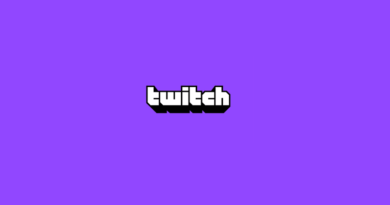OTT Subscriptions and Household Budgets: How Much Are We Really Spending?
The explosion of Over-the-Top (OTT) streaming services has revolutionized the way we consume television and film content, offering viewers an unprecedented range of choices. However, this plethora of options comes with a cost. As households sign up for multiple OTT subscriptions to access their favorite shows and movies, it raises an important question: How much are we really spending, and how does this compare to traditional cable TV costs?
The Cost of Multiple OTT Subscriptions
- Subscription Fees Breakdown: The cost of OTT subscriptions can add up quickly. As of 2024, many popular OTT platforms are priced as follows:
- Netflix: $15 to $20 per month, depending on the plan and features (e.g., HD, 4K).
- Disney+: $8 to $13 per month, depending on the plan (e.g., with or without ads).
- Hulu: $7.99 for the ad-supported plan, $14.99 for the ad-free plan.
- Amazon Prime Video: Included with an Amazon Prime membership at $14.99 per month or $139 per year.
- HBO Max: $15.99 per month for the ad-free plan.
- Paramount+: $5.99 for the ad-supported plan, $11.99 for the ad-free plan.
- Apple TV+: $9.99 per month.
For a household subscribing to all these services, the monthly cost can easily exceed $80. Adding premium sports or niche content services, like DAZN or Discovery+, could push this total even higher.
- Bundling and Discounts: Some OTT services offer bundles or discounts, which can mitigate costs. For example, Disney+ bundles with Hulu and ESPN+ for a combined price of around $19.99 per month. Additionally, some platforms offer annual plans that reduce the overall monthly cost. Despite these discounts, the cumulative cost of multiple subscriptions still represents a significant expenditure.
- Potential Overlap: Many households subscribe to several OTT platforms to access exclusive content, but there is often overlap in content libraries. For instance, many popular TV shows and movies are available on multiple services, leading to redundancy and unnecessary costs.
Comparing OTT Costs to Traditional Cable TV
- Cable TV Expenses: Traditional cable TV packages vary widely but typically cost between $80 and $150 per month, depending on the channel lineup, features, and region. This cost usually includes access to a broad range of channels, including premium networks and sports channels, along with additional fees for equipment and installation.
- Equipment and Fees: Cable TV often comes with additional costs for renting equipment (e.g., set-top boxes) and installation fees. These can add an extra $10 to $20 per month or more to the overall bill.
- Value Comparison: When comparing OTT and cable costs, it’s essential to consider the value provided:
- Channel Variety: Traditional cable offers a wide array of channels, including live TV, sports, and news, which can be appealing for those who prefer a comprehensive media package. OTT services offer more targeted content, often focusing on specific genres or exclusive programming.
- Flexibility and Control: OTT platforms provide greater flexibility in terms of viewing schedules and content selection. Unlike cable TV, which has fixed programming schedules, OTT services allow viewers to watch on-demand and on multiple devices.
Financial Impact on Household Budgets
- Total Monthly Costs: For households subscribing to multiple OTT services, the monthly cost can rival or exceed traditional cable bills, particularly if premium services are included. For example, a combination of Netflix, Disney+, Hulu, and HBO Max could total around $60 to $70 per month, not including additional costs for other services.
- Budget Management: Households must evaluate their entertainment budgets carefully. With the flexibility of OTT subscriptions, some families may find it easier to tailor their subscriptions to their viewing habits, potentially reducing costs by canceling underused services.
- Potential Savings: While OTT services offer flexible pricing, households may save money by selecting a few key subscriptions and avoiding overlapping content. Bundles and promotions can also help manage costs. For example, opting for ad-supported tiers or annual plans may provide financial relief.
Future Trends and Considerations
- Evolving Pricing Models: OTT platforms are continuously evolving their pricing models. Future trends might include more dynamic pricing based on content consumption, tiered access to premium content, or even innovative models that integrate both subscription and advertising.
- Content Aggregation: As the OTT market matures, content aggregation platforms might emerge to simplify access and potentially offer consolidated pricing, making it easier for households to manage their subscriptions and avoid redundant costs.
- Adoption of Hybrid Models: More OTT platforms may adopt hybrid models that blend subscription and ad-supported options, providing greater flexibility for consumers and potentially reducing costs.
Conclusion
The financial impact of multiple OTT subscriptions on household budgets can be substantial, often approaching or exceeding the cost of traditional cable TV. While OTT services offer flexibility, targeted content, and innovative viewing experiences, the cumulative cost can add up quickly. Comparing these costs to traditional cable requires a nuanced understanding of what each option provides in terms of content, convenience, and value. As the OTT landscape continues to evolve, households will need to carefully manage their subscriptions and budgets to make the most of their entertainment options while keeping costs in check.




